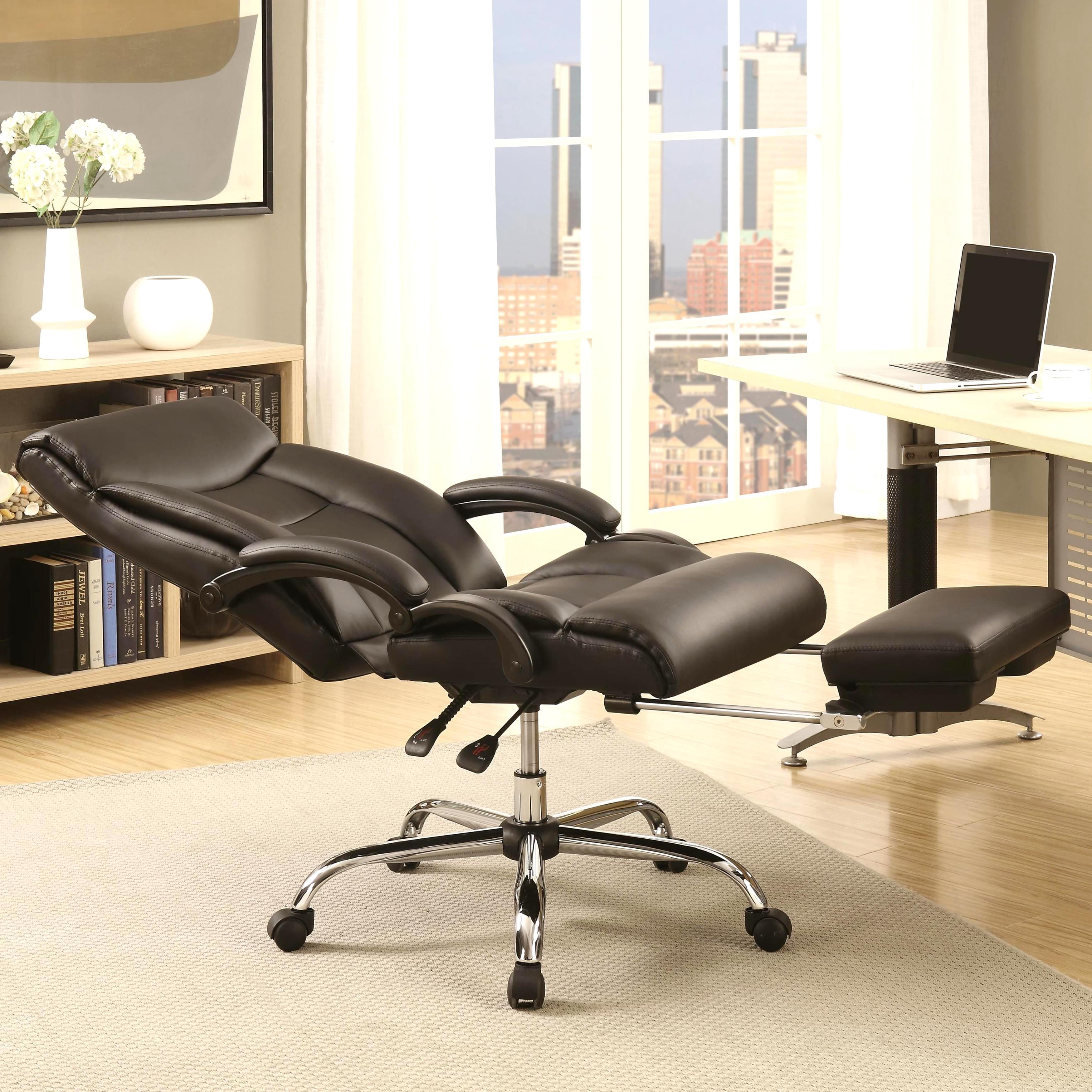Ergonomics and Comfort of Lean Back Desk Chairs

Lean back desk chairs offer a compelling alternative to traditional office chairs, promising enhanced ergonomic support and increased comfort during prolonged sitting. Their design, incorporating adjustable recline mechanisms and often superior lumbar support, directly addresses the health concerns associated with sedentary work. This discussion will explore the ergonomic advantages and comfort levels offered by these chairs, comparing various designs and materials to illustrate their impact on posture and well-being.
Ergonomic Benefits of Lean Back Chairs
Compared to standard office chairs, lean back chairs provide several key ergonomic advantages. The adjustable recline allows users to shift their posture throughout the workday, reducing strain on the spine. Many models feature adjustable lumbar support, crucial for maintaining the natural curvature of the lower back and preventing back pain. This dynamic adjustment caters to individual needs and preferences, unlike fixed-position chairs. Furthermore, the ability to recline encourages micro-breaks and changes in posture, mitigating the negative effects of prolonged static sitting. Proper lumbar support prevents slouching and promotes a more upright, ergonomically sound posture.
Comfort Levels in Lean Back Chair Designs
The comfort of a lean back chair is significantly influenced by the materials used in its construction. Mesh back chairs offer excellent breathability, preventing overheating and discomfort, particularly in warmer climates or during periods of intense activity. Leather chairs, while offering a luxurious feel and aesthetic appeal, can sometimes be less breathable and may become uncomfortable in warmer environments. Fabric chairs provide a balance, offering a degree of breathability and a softer texture than leather, but their durability and breathability can vary greatly depending on the specific fabric used. The padding and overall design of the chair also contribute to long-term comfort; well-padded seats and armrests reduce pressure points and enhance overall user experience. High-quality materials and construction will generally lead to increased longevity and continued comfort.
Recline Mechanism and its Impact on Posture, Lean back desk chair
The recline mechanism in a lean back chair plays a pivotal role in promoting good posture and back health. The ability to adjust the recline angle allows users to find an optimal position that supports the natural curves of the spine. The ideal sitting position involves maintaining a slight recline, with the feet flat on the floor and the knees bent at a 90-degree angle. The lumbar support, ideally adjustable, should provide adequate support to the lower back, preventing slouching and promoting proper spinal alignment. A well-designed recline mechanism allows for dynamic posture changes, preventing the stiffness and discomfort associated with prolonged static sitting. Regular adjustments throughout the day can significantly improve posture and reduce the risk of back pain.
Comparison of Lean Back Desk Chairs
The following table compares three different lean back desk chairs based on ergonomic features, materials, and price point:
| Model Name | Material | Key Ergonomic Features | Price Range |
|---|---|---|---|
| ErgonomicPro X1 | Mesh | Adjustable lumbar support, adjustable recline, adjustable armrests, breathable mesh back | $300 – $400 |
| ComfortMax 5000 | Leather | Adjustable recline, padded seat and back, adjustable headrest, lumbar support | $450 – $600 |
| RelaxChair Elite | Fabric | Adjustable lumbar support, adjustable recline, breathable fabric, padded armrests | $250 – $350 |
